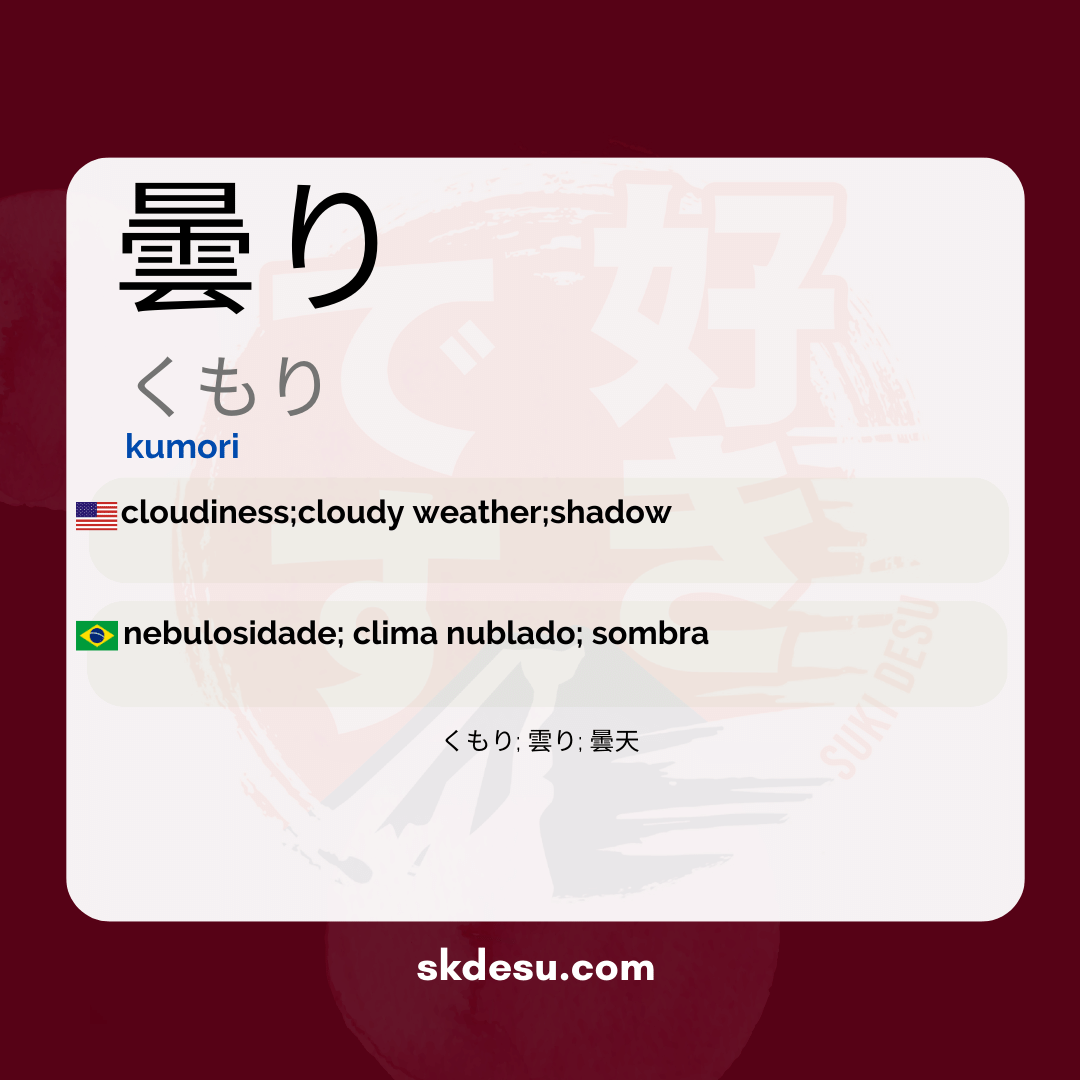Translation and Meaning of: 曇り - kumori
If you are learning Japanese or are curious about the language, you may have come across the word 曇り [くもり]. It is common in everyday life and frequently appears in weather forecasts, informal conversations, and even in cultural expressions. In this article, we will explore its meaning, origin, and how it is used by Japanese people in their daily lives. Additionally, you will discover practical tips for memorizing it and understanding its role in communication.
The meaning and origin of 曇り
The word 曇り [くもり] means "cloudy," describing a sky covered by clouds. Its kanji, 曇, is composed of 日 (sun) and 雲 (cloud), literally representing the sun being obscured by the clouds. This visual combination helps to understand why the term was chosen to describe this type of weather.
In the Japanese language, 曇り is a noun that can also be used as a verb in the form 曇る [くもる], meaning "to become cloudy." The origin of the kanji traces back to classical Chinese, but its use in Japan has established it as part of the basic meteorological vocabulary. Unlike more technical words, 曇り is easily recognized even by children.
How and when to use 曇り in everyday life
曇り is a common word in discussions about the weather. The Japanese often use it to describe the weather, as in "今日は曇りです" (today is cloudy). It also appears in weather forecasts and even in more poetic expressions, such as in songs or literature, to convey melancholy or uncertainty.
It is worth highlighting that, although 曇り is neutral, its use can vary depending on the context. On a summer day, for example, it can bring relief by easing the heat. In winter, it may be associated with a gloomier atmosphere. This duality is part of the richness of the Japanese language, where a simple word carries cultural nuances.
Tips for memorizing and curiosities about 曇り.
An effective way to memorize 曇り is to associate it with the kanji 雲 (cloud), which appears in its composition. Another tip is to create flashcards with images of cloudy skies and the writing in Japanese. Many students also use weather apps in Japanese to become familiar with the term in real context.
An interesting fact is that in Japan, cloudy days are often linked to specific seasons. In spring, for example, 曇り can indicate the arrival of the rainy season (梅雨), while in autumn it is associated with milder weather. This type of contextual knowledge helps understand how the Japanese perceive and use the word in their daily lives.
Vocabulary
Expand your vocabulary with related words:
Synonyms and similar words
- くもり (kumori) - Cloudy weather conditioning.
- 雲り (kumoり) - Clouds, a state of cloudy weather.
- 曇天 (donten) - Cloudy sky; it specifically refers to a day without sun.
Romaji: kumori
Kana: くもり
Type: noun
L: jlpt-n3, jlpt-n5
Translation / Meaning: cloudiness; cloudy climate; shadow
Meaning in English: cloudiness;cloudy weather;shadow
Definition: The sky is covered with clouds.
Quick Access
- Vocabulary
- Writing
- Sentences
How to Write in Japanese - (曇り) kumori
See below a step-by-step guide on how to write the word by hand in Japanese. (曇り) kumori:
Example Sentences - (曇り) kumori
See below some example sentences:
Kyou wa kumori desu
Today is cloudy.
It's cloudy today.
- 今日 - today
- は - Topic particle
- 曇り - cloudy
- です - Verb to be/estar in the present
Other Words of this Type: noun
See other words from our dictionary that are also: noun

